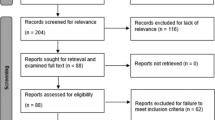Abstract
Objective
The purpose of this study was to assess the impact of patient position on the magnitude of the coronal Cobb angle measurements in relation to the change of position using plain radiograph on non-ambulatory children with myelodysplasia.
Summary of background data
Whole-spine radiographs with the patient sitting generally are preferred for the diagnosis and monitoring of progression of scoliosis in neuromuscular patients. Supine, supine traction, and sitting push-up positions have been used as substitutes, although there is no general consensus validating if these positions correlate with the sitting position. The magnitude of the Cobb angles in neuromuscular scoliosis may vary greatly depending on the position of the patient.
Methods
Radiographs of 39 myelodysplastic, non-ambulatory children were evaluated to assess the impact of change in positions (unsupported sitting, sitting push-up, supine, and supine traction) on coronal Cobb angle measurement using plain whole-spine radiographs.
Results
The mean difference in thoracic Cobb angle measurements between sitting and all other positions ranged from 6° to 12°. At the lumbar level, the Cobb angles ranged from 12° to 16°.
Conclusions
Statistically significant differences in the Cobb angle measurements were identified between plain radiographs of the whole spine with the patient in the unsupported sitting position compared to sitting push-up, supine, and supine traction positions. The data support that the magnitude of the Cobb angles in neuromuscular scoliosis varies greatly depending on the position of the patient.
Level of evidence
III.

Similar content being viewed by others
References
Halawi M, Lark R, Fitch R (2015) Neuromuscular scoliosis: current concepts. Orthopedics 38:e452–e456
Cobb JR (1948) Outline for the study of scoliosis. In: Edwards JW (ed) Instructional course lectures. The American Academy of Orthopedic Surgeon, Ann Arbor, pp 261–275
Gupta M, Wijesekera S, Sossan A et al (2007) Reliability of radiographic parameters in neuromuscular scoliosis. Spine 32:691–695
Brink RC, Colo D, Schlösser TPC et al (2017) Upright, prone, and supine spinal morphology and alignment in adolescent idiopathic scoliosis. Scoliosis Spinal Disord 12:6
Keenan BE, Izatt MT, Askin GN et al (2014) Supine to standing Cobb angle change in idiopathic scoliosis: the effect of endplate pre-selection. Scoliosis 9:16
Vavruch L, Tropp H (2016) A comparison of Cobb angle: standing versus supine images of late-onset idiopathic scoliosis. Polish J Radiol 81:270–276
Torell G, Nachemson A, Haderspeck-Grib K et al (1985) Standing and supine Cobb measures in girls with idiopathic scoliosis. Spine 10:425–427
Lee MC, Solomito M, Patel A (2013) Supine magnetic resonance imaging Cobb measurements for idiopathic scoliosis are linearly related to measurements from standing plain radiographs. Spine 38:E656–E661
Wessberg P, Danielson BI, Willen J (2006) Comparison of Cobb angles in idiopathic scoliosis on standing radiographs and supine axially loaded MRI. Spine 31:3039–3044
Trivedi J, Thomson JD, Slakey JB et al (2002) Clinical and radiographic predictors of scoliosis in patients with myelomeningocele. J Bone Joint Surg Am 84(8):1389–1394
Canfield MA, Mai CT, Wang P, O’Halloran A, Marengo LK, Olney RS et al (2014) The association between race/ethnicity and major birth defects in the United States, 1999–2007. Am J Public Health 104:e1–e10
Acknowledgements
The authors thank the Children’s Spine Foundation for the grant awarded to perform the study. We also give recognition to John M Flynn MD (deceased) who gave the initial support.
Funding
Funding was provided by Children Spine Foundation Grant #18.
Author information
Authors and Affiliations
Corresponding author
Ethics declarations
Conflict of interest
The authors declared that they have no conflict of interest.
Additional information
IRB approval: Hospital De La Concepcion, Research Ethics Committee.
Rights and permissions
About this article
Cite this article
Ramirez, N., Padilla, J., Villarin, S. et al. Impact of patient position on coronal Cobb angle measurement in non-ambulatory myelodysplastic patients. Eur J Orthop Surg Traumatol 29, 25–29 (2019). https://doi.org/10.1007/s00590-018-2264-1
Received:
Accepted:
Published:
Issue Date:
DOI: https://doi.org/10.1007/s00590-018-2264-1




